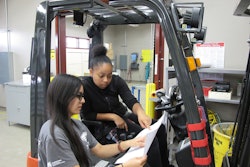
The American Transportation Research Institute (ATRI) has released an analysis on the impacts that emerging e-commerce trends are having on the trucking industry, including challenges and opportunities that more regionalized retail supply chains and the proliferation of urban "last mile" deliveries have presented.
The analysis provides background on emerging e-commerce and omni-channel retailing trends and maps the implications of these trends to trucking operations and the industry's top ten issues. Key findings in the report include:
- From 1999-2017, e-commerce sales increased from less than one percent of total U.S. retail sales to more than nine percent, reflecting a 3,000 percent increase in e-commerce sales.
- Annual growth of e-commerce has ranged between 13 and 16 percent over the last five years, outpacing the one to five percent annual growth in traditional retail sales.
- Retailers are becoming more flexible in how they transact with consumers by decentralizing their distribution/fulfillment networks to bring inventory closer to consumers.
- There were 2,130 fewer department stores and 385,000 fewer jobs at these stores in 2017 compared to 2015; there were 1,937 more courier services operating and just over 85,000 new employees hired in the sector during this time period.
- “Last Mile Fulfillment Centers” represented 73 percent of the industrial real estate market in 2017, a 15 percentage point increase from the previous year.
- Registrations for single-unit trucks increased by 7.8 percent between 2007 and 2016 compared to 4.4 percent growth in combination truck registrations.
- The number of intra-regional and last-mile truck trips has increased while the average length of haul has declined. Average trip lengths have decreased 37 percent since 2000, while urban vehicle miles traveled have increased for much of this time period.
- Intrastate and local hauls for e-commerce could serve as a training opportunity for 18-20-year-old drivers, representing a huge new pool of potential interstate CDL drivers.
“ATRI’s research provides a critical roadmap for trucking industry stakeholders to address the challenges and benefits of e-commerce and omni-channel retailing,” says Tom Benusa, CIO of Transport America. “These trends are game-changing, and our industry must adapt quickly to ensure that trucking continues to be the preeminent freight mode.”
















